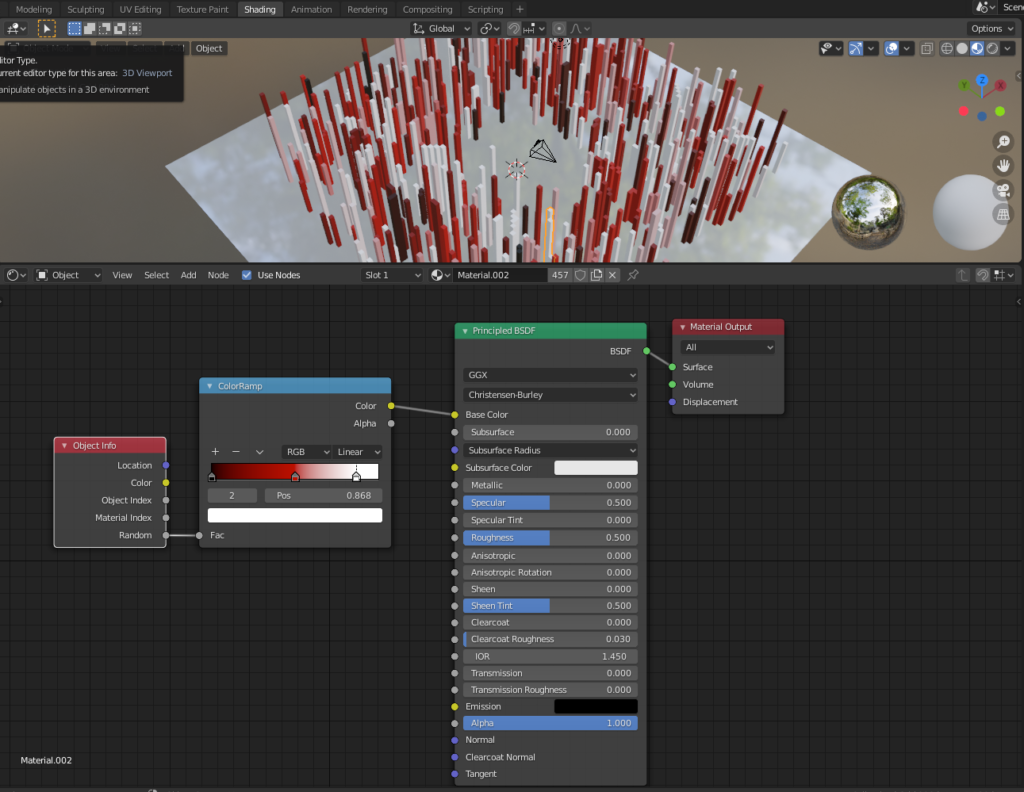Thanks to 3DTudor for this quick tip that can greatly speed up your texturing workflow! It’s based on first activating the Node Wrangler addon (comes with Blender) and then hitting shift+ctrl+T. The principled shader should be selected when you hit the shortcut.
How to render a stereoscopic 360 animation from Blender EEVEE
Rendering out stereo 360 from Blender EEVEE is actually pretty easy thanks to the new eeVR addon.
Random object colors in Blender EEVEE
DaVinci Resolve Power Edit Cheat Sheet
How to use Git with InstantWP
If you are using the amazing free InstantWP WordPress development package often, then you might start wondering how to properly use it with Git version control. The difficulty is that trying to add the entire Linux Alpine virtual operating system to Git is too heavy, but adding only the contents of the Theme folder will not keep track of your posts and other database related content. I will outline the steps I used to get Git working with IWP below:
Continue reading “How to use Git with InstantWP”Run a simple lightweight Python server
When you are developing websites you often run into the need to test them on a server environment, because browsers block websites with certain features from running locally.
Here is a really quick way to run such a website in a server environment using Python 3 (which you probably have already installed on your machine anyways).
- Open the command window where your website root folder is. One easy way of doing that is simply typing “cmd” in the Windows Explorer address bar.
- Type this command in the command window:
python -m http.server 8000
- Now simply go to http://127.0.0.1:8000/ in your browser.
If you are getting errors regarding script files with that simple version, you can also try this longer code:
python
#Use to create local host
import http.server
import socketserver
PORT = 1337
Handler = http.server.SimpleHTTPRequestHandler
Handler.extensions_map.update({
".js": "application/javascript",
});
httpd = socketserver.TCPServer(("", PORT), Handler)
httpd.serve_forever()And open that with:
http://127.0.0.1:1337/
Hair modeling tips for Blender
I have recently been doing hair renders in Blender and thought I would share some key tips that I have learned along the way:
- Use multiple particle systems. If you put all your hair in just one particle system, it becomes really tedious to edit the hair. You’ll end up combing hair that you didn’t mean to etc.
- Place the hair manually in hair edit mode (with the add hair brush). So set the initial amount to zero in the particle settings. Comb after every round of hair.
- Use simple children instead of interpolated, they are much easier to handle in the edit mode.
- To make the interpolated children more fluffy, increase the “radius” value.
- Be careful with the Path –> steps value, large values made my Blender crash.
- Use the Hair BSDF if you are rendering with Cycles. As of now that won’t work for Eevee so you’ll need to create your own shader for Eevee.
- Subdivide the roots of your hair in edit mode, because the hair needs more bend right where it comes out from the head. Also use enough keys when creating the hair strands.
Using Blender as a vector drawing program
I’m currently working on a project in which I need to create a lot of vector drawings. After trying Inkscape for a moment and having some frustrations with the user interface there, I decided to return to my favorite software: Blender. In this post I will document the things I learn while using the grease pencil tool to create vector art in Blender.
Continue reading “Using Blender as a vector drawing program”Colorize or tint an SVG image with CSS
This is a quick example of how you can tint an svg image even if it’s added to the page externally (it’s not an inline svg):
Continue reading “Colorize or tint an SVG image with CSS”Increment number when creating multiple html elements using emmet
Sometimes you need to create many elements so that each one of them gets a unique, incrementing number. You probably already know about VS Code’s Emmet capabilities which let you type something like .myClass*5 to automatically create five divs with the class “myClass”. So the output of that would be:
Continue reading “Increment number when creating multiple html elements using emmet”


